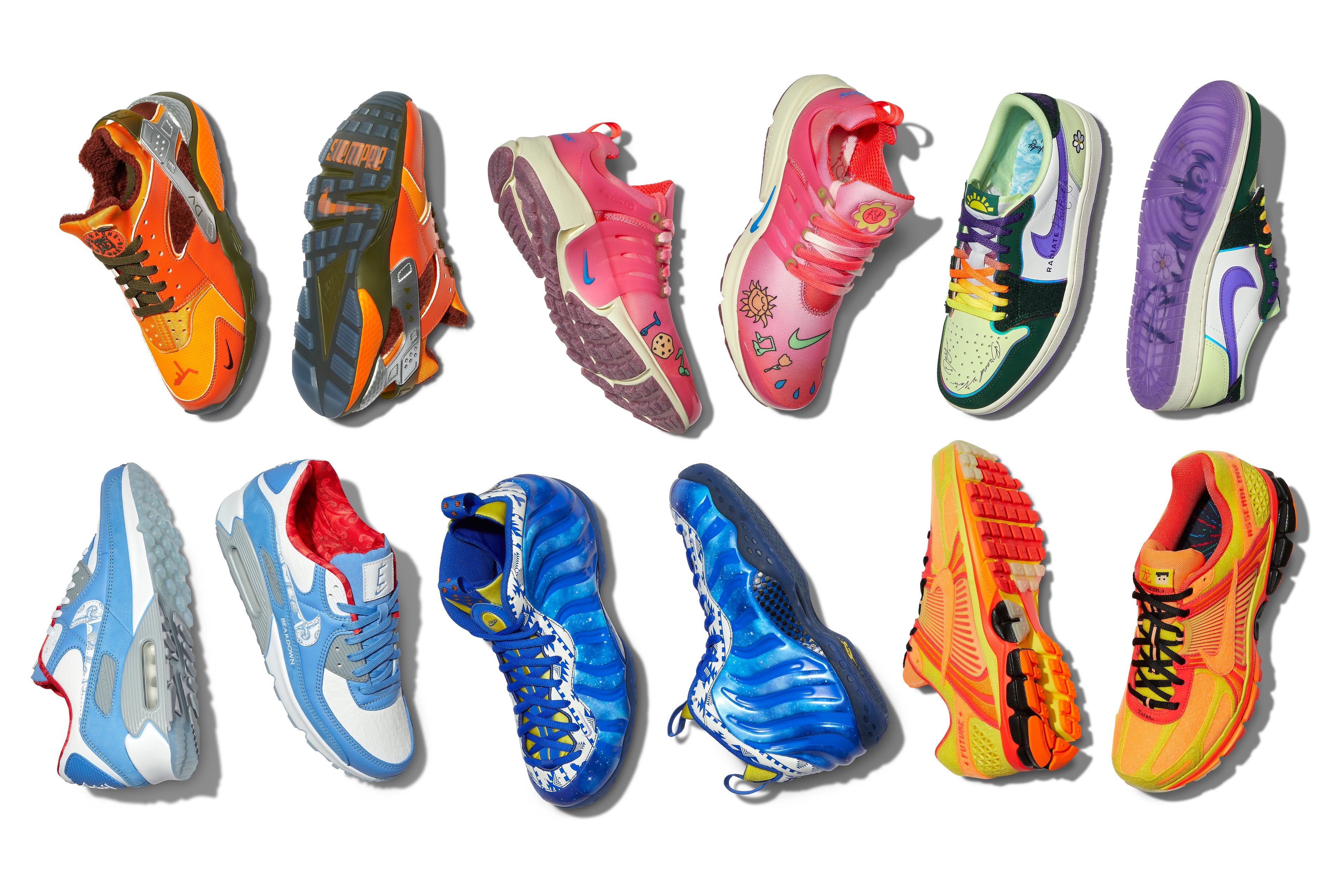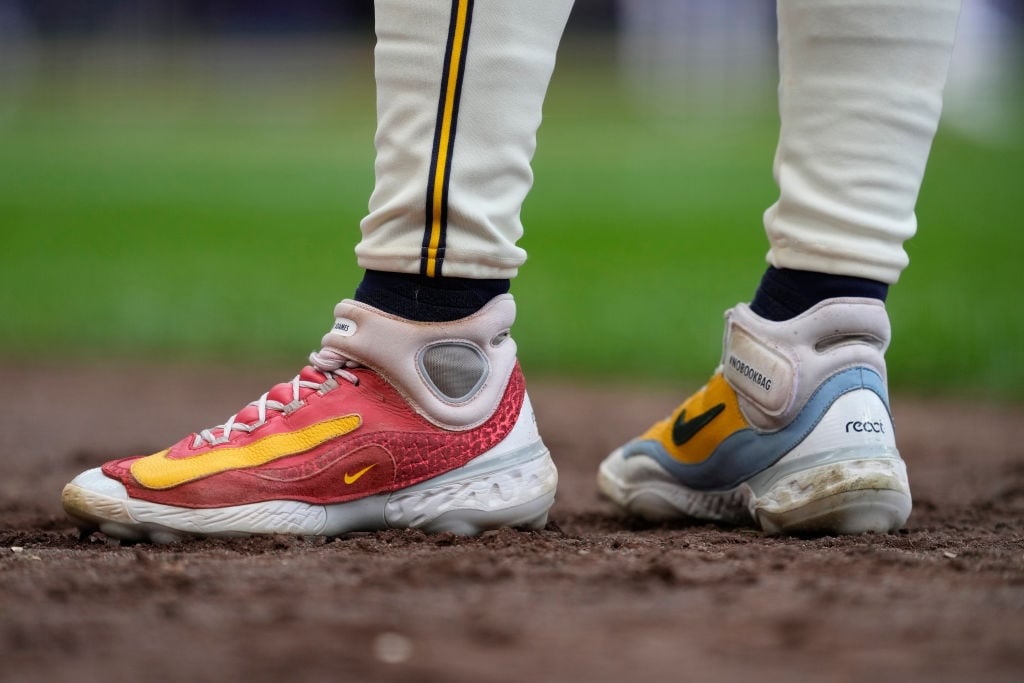
Nike (NKE +4.46%) stock may have suffered a modest pullback after reporting mixed fiscal third-quarter results last week, but that doesn't mean the athletic footwear and apparel juggernaut has lost its stride.
Specifically, Nike's quarterly revenue climbed 7.7%, to $8.03 billion, near the low end of the company's guidance for reported revenue growth in the high single- to low double-digit percentage range. But revenue would have risen 14% had it not been for the negative effects of foreign exchange, and CEO Mark Parker used his prepared comments to insist this demonstrated "robust and balanced growth across our expansive, powerful portfolio." What's more, thanks to a combination of healthy gross margin and disciplined expense management, Nike's net income rose 20%, to $950 million, and 22% on a per-share basis, to $0.55. By comparison, Wall Street was only looking for earnings per share of $0.49.
But Nike is about more than just its top and bottom lines. For a deeper understanding of what truly drives this $106 billion business, it helps to listen to supplementary color provided by management during its quarterly conference calls with analysts. Here are five important points they discussed during Nike's most recent call:
1. The "Complete Offense" strategy is (still) crucial
The complete offense is our proven game plan to drive long-term profitable growth, and it's never been as powerful as it is today. For example, we're seeing strong growth in China and Western Europe as well as in our global women's business and the Running category. We are creating deeper and more meaningful connections with our consumers through all of our dimensions from competition to training to sportswear. -- Nike CEO Mark Parker
For perspective, "complete offense" effectively describes Nike's approach of compartmentalizing its enormous business into discrete pieces that still function in a cohesive, complementary way. As Parker described it during Nike's 2015 investor meeting this past October, Nike leverages multiple dimensions including its brands (namely Nike and Converse), 13 sport categories (notably including sportswear, running, global football, and women's training), key geographies, maintaining a healthy balance sheet, and the expertise of its management teams.
"This is how we use scale as a competitive advantage," explained Parker, "yet stay nimble."
2. Innovation is a cornerstone
[M]y second point: The virtuous cycle of growth and investment that fuels NIKE's financial model. Growth creates the capacity to invest. And as we prioritize our investments, innovation will always be at the top of NIKE's list. At last week's innovation summit, we showcased what we mean when we say NIKE will bring a relentless flow of innovation to serve the athlete and consumer. -- Nike CEO Andy Campion
To be sure, Nike's innovation summit included some wild new products, including new NikeGRIP socks that integrate a two-sided, anti-slip fiber to place more traction at key contact points to prevent "foot-to-shoe disruptions," an anti-clog traction system to prevent mud from sticking to the sole plate of Nike football boots, and even a future-esque self-lacing shoe dubbed Nike HyperAdapt 1.0.
In the end, these kinds of innovation will be key to enabling Nike to remain a premium brand -- and thereby command premium prices and margins for its products -- in the eyes of consumers.
3. EPS growth will be uneven this year
[W]e expect that our EPS growth will be more heavily weighted toward the back half of fiscal year '17, as we invest in significant brand initiatives early in the fiscal year including the Rio Olympics and the European Football Championships, and also due to unfavorable FX comparisons being more pronounced in the first half of the fiscal year. The macroeconomic environment remains dynamic creating both headwinds and opportunities. -- Andy Campion
Nike also knows all too well the payoff of strategically making "demand creation" investments surrounding key athletic events. As such, selling, general, and administrative expenses will look abnormally high early this fiscal year given investments to drive demand around the upcoming Rio Olympics and European Football Championships.
That said, while Nike is also typically astute at hedging against the negative effects of foreign exchange, investors would be wise to watch FX comparisons -- even though they should prove a temporary issue -- to ensure they unfold as Nike expects.
4. Women's continues to outperform
NIKE Women's ... has seen its ninth consecutive quarter of double-digit revenue growth as the business continues to outpace our Men's business. We've seen consistent growth in our women's business, because we know this athlete is demanding more from brands, across products, across services, and across experiences. And we're there every step of the way throughout that journey, serving her completely through her run, train, and live lifestyle. -- NIKE Brand President Trevor Edwards
Next, it's no mystery companies like Nike and Under Armour (UA +1.43%) started as primarily male-centric brands. But they've both recognized the opportunity in the women's segment, and Under Armour CEO Kevin Plank has made clear in recent months the time has come for his up-and-coming company to be more aggressive and focus on taking as much market share as possible in women's. In fact, Plank has repeatedly stated Under Armour's end goal is to make women's just as large or larger than its men's business.
However, with Nike's own women's segment now exceeding two years of double-digit revenue growth, Nike investors can rest assured it will be no easy task for Under Armour to sustain its momentum.
5. Converse's decline isn't what it seems
At Converse, Q3 revenue declined 5% on a currency-neutral basis, primarily driven by comparisons to a prior year shift in the timing of shipments out of Q4 and into Q3, fiscal year '15. To ensure converse is smooth transition to a new ERP system. On a reported basis, Converse revenue decreased 9% and EBIT decreased 22% versus prior year, driven primarily by the revenue shift, lower gross margin and weakness in the euro. -- Andy Campion
Recall that three quarters ago, Campion warned Converse's year-over-year growth would be "uneven" as it shifts the brand to a more direct operating model overseas. As such, though it might seem alarming at first glance to see this promising brand report overall sales declines, investors need to know these declines continue to be related to Converse's ongoing transition. Over the long term, Converse should ultimately return to sustained growth and serve as a valuable supplementary contributor to Nike's overall results.







